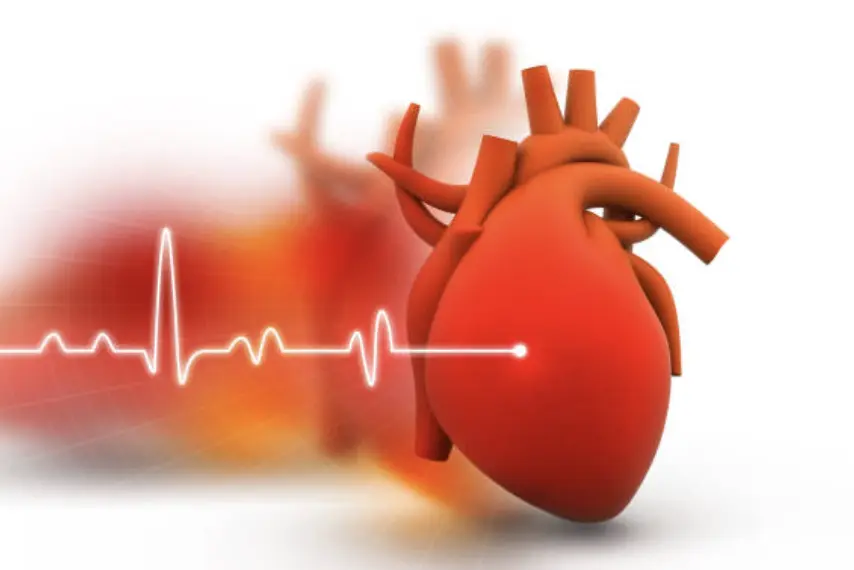How to Lose Arm Fat: Effective Exercises for Women
Arm Fat and Its Causes
Arm fat is a common concern for many women, often manifesting as excess fat deposits in the upper arms. This issue affects one’s physical appearance and can also impact self-confidence and overall health.
Genetics plays a significant role in the way our bodies store fat. During menopause or when estrogen levels change, hormone shifts can cause this area to store more fat. These hormonal imbalances can make it particularly challenging to lose arm fat through general weight loss strategies alone.
Poor dietary habits also contribute significantly to fat accumulation in the arms. Diets high in processed foods, sugars, and unhealthy fats can lead to overall weight gain, including in the upper arms.
The Importance of a Balanced Diet
Also, a balanced diet is key for losing fat, especially if you want to slim down your arms. Eating lots of lean proteins, healthy fats, and different vegetables can help reduce body fat, including arm fat. Lean proteins like chicken breast, fish, and beans help build and repair muscles, which is crucial when working out to tone your arms.
Additionally, healthy fats from avocados, nuts, and olive oil are important for metabolism and hormone balance. These fats also contribute to a feeling of satiety, helping to curb unnecessary snacking and overeating.
Hydration is another key component. Drink enough water daily to keep your metabolism healthy and reduce bloating, especially in your arms. To reduce arm fat, avoid processed foods and sugary drinks. They have empty calories that can cause weight gain and fat buildup.
In essence, adopting a balanced diet not only supports overall health but also enhances the effectiveness of targeted exercises. This holistic approach ensures a sustainable and healthy path to achieving toned arms and overall body composition goals.
Cardio Exercises to Burn Overall Fat
Cardiovascular exercises are crucial in burning overall body fat, including arm fat. These exercises elevate the heart rate, increase metabolism, and enhance calorie burn, contributing to overall fat loss; for women aiming to lose arm fat, incorporating effective cardio workouts into their routine is essential.
Running easily integrates into a fitness regimen as a highly efficient cardio exercise. It burns many calories and engages multiple muscle groups, promoting comprehensive fat loss. Whether opting for outdoor runs or treadmill sessions, consistency is key to achieving desired results.
Cycling is another excellent cardiovascular workout that targets lower body muscles while aiding overall fat reduction. Both outdoor cycling and stationary biking can be effective.
Try to ride a bike for 30 minutes a few times a week. Aim for a moderate to intense pace. It will help you burn fat more effectively.
Swimming offers a full-body workout that enhances cardiovascular health and muscle tone. This low-impact exercise is especially beneficial for those with joint concerns. Swimming laps or participating in water aerobics can significantly reduce body fat, including arm fat.
High-Intensity Interval Training (HIIT) is a popular and highly effective fat-loss cardio workout. HIIT alternates between short bursts of intense activity and rest or low-intensity exercise periods. This method maximizes calorie burn and boosts metabolism after the workout. Integrating HIIT sessions, such as sprinting, jumping jacks, or burpees, into a weekly routine can accelerate weight loss.
Maintaining a consistent schedule to maximize the benefits of these cardio exercises is important. Stay healthy by doing 150 minutes of moderate or 75 minutes of intense exercise each week. Additionally, pairing these exercises with a balanced diet and adequate hydration will support fat loss and overall health.
Strength Training for Toned Arms
Strength training is pivotal in losing arm fat and achieving toned arms effectively. By adding specific exercises to your workout, you can build muscle, which helps decrease overall fat. Here are some effective arm-strengthening exercises: bicep curls, tricep dips, push-ups, and shoulder presses.
Bicep curls are a basic exercise that targets the muscles in the front of your upper arms. To perform a bicep curl:
- Stand shoulder-width apart with your feet, holding a dumbbell in each hand with your palms facing forward.
- Curl the weights towards your shoulders while keeping your elbows stationary.
- Lower them back down slowly, ensuring controlled movement throughout the exercise.
Tricep dips target the triceps, the muscles at the back of your upper arms. You can perform tricep dips using a stable chair or bench. Sit on the edge, place your hands next to your hips, and extend your legs in front of you. Lower your body off the chair until your elbows form a 90-degree angle, then push back up to the starting position.
Push-ups are a versatile exercise that engages multiple muscle groups, including the arms, chest, and shoulders. Begin in a plank position with your hands slightly wider than shoulder-width apart. Lower your body until your chest nearly touches the ground, keeping your elbows close to your body, then push back up. Modify this exercise by performing it on your knees if necessary.
Shoulder presses work the deltoid muscles of the shoulders. To execute a shoulder press, stand with feet shoulder-width apart, holding a dumbbell in each hand at shoulder height, palms facing forward. Push the weights upward until your arms fully extend, then lower them back to shoulder height.
Aim to do these exercises twice to thrice a week for the best results in slimming your arms and toning muscles. Aim for three sets of 12-15 repetitions per exercise, adjusting the weight and intensity as your strength improves. Consistency, proper form, and gradually increasing resistance are key to achieving your fitness goals.
Targeted Arm Exercises
Targeted exercises are critical when learning how to lose arm fat effectively. These exercises directly focus on the arm muscles, which helps tone and strengthen them. A well-rounded routine includes movements that engage different parts of the arm, such as the triceps, biceps, and shoulders.
One effective exercise is the tricep kickback. To perform this exercise:
- Start by holding a dumbbell in each hand.
- Bend your knees slightly and hinge at the waist, keeping your back flat.
- With your upper arms close to your body and parallel to the floor, extend your elbows to push the weights back.
Return to the starting position and repeat. This movement isolates and works the triceps, helping tone the arm’s back.
Arm circles are another simple yet effective exercise. Stand with your feet shoulder-width apart and extend your arms to the sides at shoulder height. Make small circles with your arms, gradually increasing the size of the circles.
You can perform this exercise both clockwise and counterclockwise. Arm circles help engage the shoulders and upper arms, improving muscle endurance and coordination.
Hammer curls are beneficial for targeting the biceps. Hold a dumbbell in each hand, with your palms facing your torso. Keep your elbows close to your body and curl the weights while maintaining the palms facing inward.
Lower the weights back down and repeat. This type of bicep curl targets the brachialis muscle under the biceps, helping define the upper arm.
Incorporating resistance band workouts can also be highly effective. Resistance bands are versatile tools that provide constant tension throughout the movement.
Example: Stand on a resistance band with your feet apart. Hold the handles and curl your arms up. It will give you a bicep workout. The added resistance helps to increase muscle strength and endurance over time.
To maximize the benefits of these exercises and ensure safety, progressively increasing the difficulty is crucial. You can achieve this by gradually increasing the weight, number of repetitions, or resistance. Maintaining proper form is also essential to avoid injury. Focus on moving carefully, and if needed, seek guidance from a fitness expert to ensure you’re doing each exercise right.
Incorporating Flexibility and Mobility Work
Stretching and movement exercises are crucial to any fitness plan, especially when targeting arm fat loss. These exercises keep your arms healthy and prevent muscle stiffness, which can hinder progress and cause discomfort or injury. Adding stretches and yoga poses that target your arm and shoulder muscles can improve the results of your strength training and arm workouts.
One of the key benefits of flexibility exercises is improving the range of motion. When muscles and joints are flexible, they can move more freely, which makes exercises like push-ups, tricep dips, and bicep curls work better.
Adding stretches such as the overhead tricep and cross-body shoulder stretch can help loosen tight muscles. It can also help activate muscles more effectively during workouts. Similarly, mobility exercises like arm circles and shoulder rolls can help maintain the functional capacity of the shoulder joints.
Yoga is another excellent way to enhance arm flexibility and mobility. Specific yoga poses such as Downward Dog, Plank Pose, and Cow Face Pose are particularly effective. Downward Dog stretches the shoulders, hamstrings, and calves while engaging the core.
Plank Pose strengthens the arms, shoulders, and wrists, promoting stability and endurance. Cow Face Pose offers a deep stretch for the triceps and shoulders, helping to release tension and improve flexibility.
Regularly incorporating these flexibility and mobility exercises into your routine can significantly improve the effectiveness of your strength training. Flexible muscles are less prone to injury and can perform better during high-intensity workouts. In turn, supports your overall goal of losing arm fat and building toned, strong arms. By prioritizing flexibility and mobility, you lay a solid foundation for sustainable arm conditioning and long-term fitness success.
Creating a Sustainable Exercise Routine
Establishing a balanced and sustainable exercise routine is paramount to losing arm fat effectively. A well-rounded regimen should incorporate cardiovascular exercises, strength training, and flexibility workouts to ensure comprehensive fitness. Cardio exercises, such as brisk walking, cycling, or swimming, are essential for burning calories and improving cardiovascular health. Aim for at least 150 minutes of moderate-intensity cardio per week, distributed over several days.
Strength training is crucial as it helps build muscle mass, which in turn boosts metabolism and aids in fat loss. Focus on exercises that target the arm muscles, such as bicep curls, tricep dips, and push-ups. Incorporate these exercises into your routine at least two to three times a week. Compound movements like rows and chest presses can contribute to overall upper-body strength.
Take advantage of flexibility exercises like yoga or Pilates. They help improve the range of motion, reduce the risk of injury, and promote muscle recovery. Incorporating flexible workouts into your routine at least once a week can significantly enhance your overall fitness.
Staying motivated and consistent is key to achieving your fitness goals. Set realistic and achievable targets, track your progress, and celebrate small victories. It’s important to listen to your body, rest, and recover to prevent exhaustion or injury. Take it slow: slowly increase how hard and long you exercise to ensure lasting results and maintain your overall health.
Tracking Progress and Staying Motivated
When embarking on a journey to lose arm fat, tracking your progress and staying motivated throughout the process is crucial. One effective strategy is to keep a detailed workout journal. You can see your development over time by noting your exercises, repetitions, and progress.
Additionally, taking regular measurements of your arms can provide tangible evidence of your progress. It can be especially motivating when the scale does not reflect your hard work.
Fitness apps are another excellent tool for tracking your progress. Many apps offer workout logging, progress tracking, and even virtual coaching.
These tools can provide structure and motivate you to stay on track. Setting realistic goals is also fundamental to maintaining motivation. Break down your ultimate goal into smaller, attainable milestones, and celebrate each achievement.
Celebrating small achievements can serve as powerful motivation. Moreover, surrounding yourself with a supportive community can make a significant difference. Share your milestones with friends or join a fitness group that openly discusses success stories and challenges.







